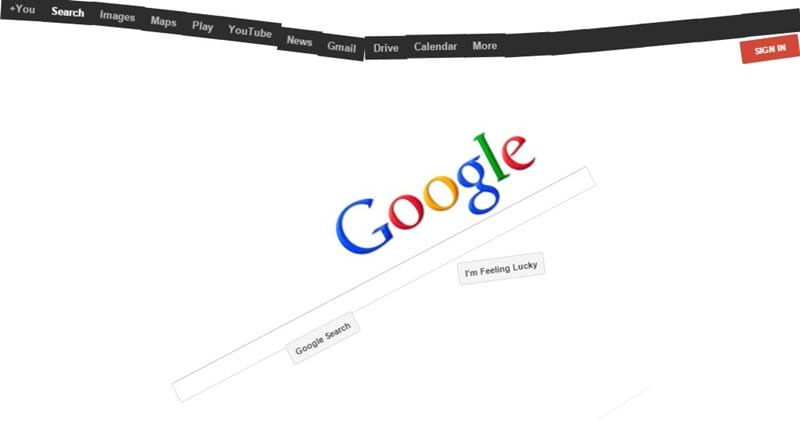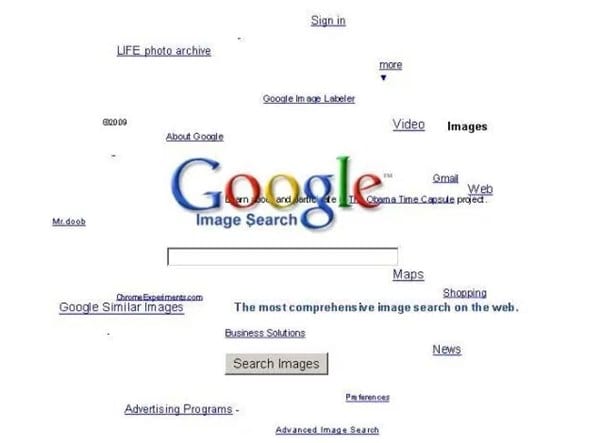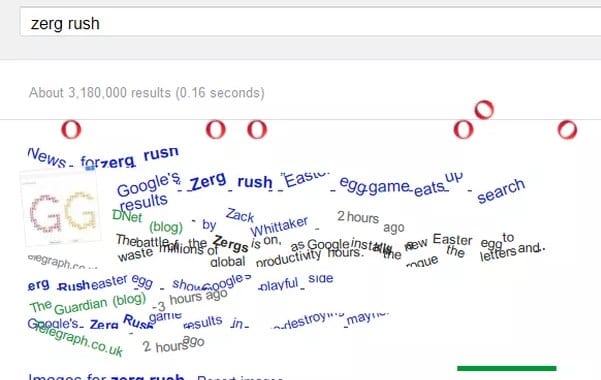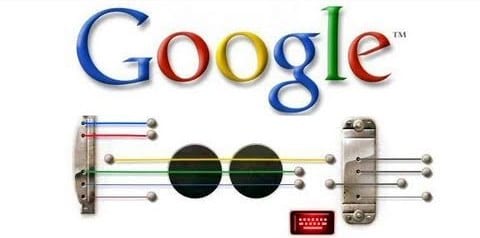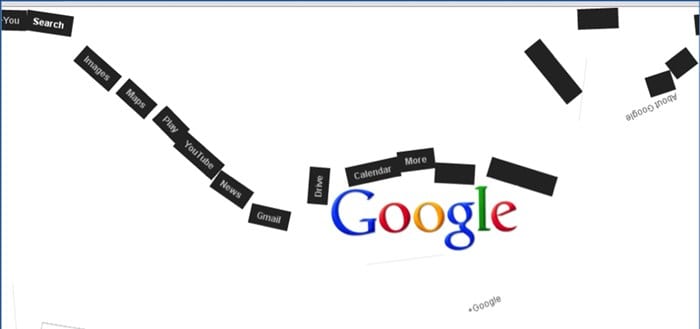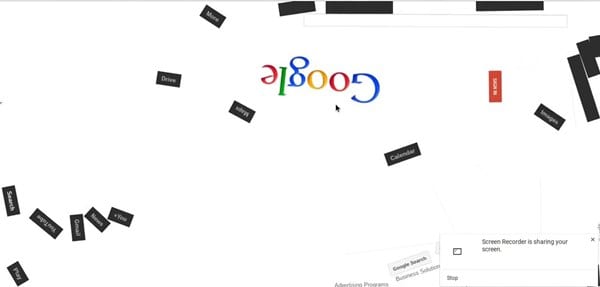During our joint research on DTLS state machines, we discovered a really interesting vulnerability (CVE-2020-2655) in the recent versions of Sun JSSE (Java 11, 13). Interestingly, the vulnerability does not only affect DTLS implementations but does also affects the TLS implementation of JSSE in a similar way. The vulnerability allows an attacker to completely bypass client authentication and to authenticate as any user for which it knows the certificate WITHOUT needing to know the private key. If you just want the PoC's, feel free to skip the intro.
DTLS
I guess most readers are very familiar with the traditional TLS handshake which is used in HTTPS on the web.
DTLS is the crayon eating brother of TLS. It was designed to be very similar to TLS, but to provide the necessary changes to run TLS over UDP. DTLS currently exists in 2 versions (
DTLS 1.0 and
DTLS 1.2), where DTLS 1.0 roughly equals
TLS 1.1 and DTLS 1.2 roughly equals
TLS 1.2.
DTLS 1.3 is currently in the process of being standardized. But what exactly are the differences? If a protocol uses UDP instead of TCP, it can never be sure that all messages it sent were actually received by the other party or that they arrived in the correct order. If we would just run vanilla TLS over UDP, an out of order or dropped message would break the connection (not only during the handshake). DTLS, therefore, includes additional
sequence numbers that allow for the detection of out of order handshake messages or dropped packets. The sequence number is transmitted within the record header and is increased by one for
each record transmitted. This is different from TLS, where the record sequence number was implicit and not transmitted with each record. The record sequence numbers are especially relevant once records are transmitted encrypted, as they are included in the additional authenticated data or HMAC computation. This allows a receiving party to verify AEAD tags and HMACs even if a packet was dropped on the transport and the counters are "out of sync".
Besides the record sequence numbers, DTLS has additional
header fields in each handshake message to ensure that all the handshake messages have been received. The first handshake message a party sends has the
message_seq=0 while the next handshake message a party transmits gets the message_seq=1 and so on. This allows a party to check if it has received all previous handshake messages. If, for example, a server received
message_seq=2 and
message_seq=4 but did not receive
message_seq=3, it knows that it does not have all the required messages and is not allowed to proceed with the handshake. After a reasonable amount of time, it should instead periodically retransmit its previous flight of handshake message, to indicate to the opposing party they are still waiting for further handshake messages. This process gets even more complicated by additional fragmentation fields DTLS includes. The MTU (Maximum Transmission Unit) plays a crucial role in UDP as when you send a UDP packet which is bigger than the MTU the IP layer might have to fragment the packet into multiple packets, which will result in failed transmissions if parts of the fragment get lost in the transport. It is therefore desired to have smaller packets in a UDP based protocol. Since TLS records can get quite big (especially the certificate message as it may contain a whole certificate chain), the messages have to support fragmentation. One would assume that the record layer would be ideal for this scenario, as one could detect missing fragments by their record sequence number. The problem is that the protocol wants to support completely optional records, which do not need to be retransmitted if they are lost. This may, for example, be warning alerts or application data records. Also if one party decides to retransmit a message, it is always retransmitted with an increased record sequence number. For example, the first ClientKeyExchange message might have record sequence 2, the message gets dropped, the client decides that it is time to try again and might send it with record sequence 5. This was done as retransmissions are only part of DTLS within the handshake. After the handshake, it is up to the application to deal with dropped or reordered packets. It is therefore not possible to see just from the record sequence number if handshake fragments have been lost. DTLS, therefore, adds additional handshake message fragment information in each handshake message record which contains information about where the following bytes are supposed to be within a handshake message.
If a party has to replay messages, it might also refragment the messages into bits of different (usually smaller) sizes, as dropped packets might indicate that the packets were too big for the MTU). It might, therefore, happen that you already have received parts of the message, get a retransmission which contains some of the parts you already have, while others are completely new to you and you still do not have the complete message. The only option you then have is to retransmit your whole previous flight to indicate that you still have missing fragments. One notable special case in this retransmission fragmentation madness is the
ChangecipherSpec message. In TLS, the
ChangecipherSpec message is not a handshake message, but a message of the
ChangeCipherSpec protocol. It, therefore, does not have a
message_sequence. Only the record it is transmitted in has a record sequence number. This is important for applications that have to determine where to insert a
ChangeCipherSpec message in the transcript.
As you might see, this whole record sequence, message sequence, 2nd layer of fragmentation, retransmission stuff (I didn't even mention epoch numbers) which is within DTLS, complicates the whole protocol a lot. Imagine being a developer having to implement this correctly and secure... This also might be a reason why the scientific research community often does not treat DTLS with the same scrutiny as it does with TLS. It gets really annoying really fast...
Client Authentication
In most deployments of TLS only the server authenticates itself. It usually does this by sending an X.509 certificate to the client and then proving that it is in fact in possession of the private key for the certificate. In the case of RSA, this is done implicitly the ability to compute the shared secret (Premaster secret), in case of (EC)DHE this is done by signing the ephemeral public key of the server. The X.509 certificate is transmitted in plaintext and is
not confidential. The client usually does not authenticate itself within the TLS handshake, but rather authenticates in the application layer (for example by transmitting a username and password in HTTP). However, TLS also offers the possibility for client authentication during the TLS handshake. In this case, the server sends a CertificateRequest message during its first flight. The client is then supposed to present its X.509 Certificate, followed by its ClientKeyExchange message (containing either the encrypted premaster secret or its ephemeral public key). After that, the client also has to prove to the server that it is in possession of the private key of the transmitted certificate, as the certificate is
not confidential and could be copied by a malicious actor. The client does this by sending a
CertificateVerify message, which contains a signature over the handshake transcript up to this point, signed with the private key which belongs to the certificate of the client. The handshake then proceeds as usual with a
ChangeCipherSpec message (which tells the other party that upcoming messages will be encrypted under the negotiated keys), followed by a Finished message, which assures that the handshake has not been tampered with. The server also sends a CCS and Finished message, and after that handshake is completed and both parties can exchange application data. The same mechanism is also present in DTLS.
But what should a Client do if it does not possess a certificate? According to the RFC, the client is then supposed to send an empty certificate and skip the CertificateVerify message (as it has no key to sign anything with). It is then up to the TLS server to decide what to do with the client. Some TLS servers provide different options in regards to client authentication and differentiate between
REQUIRED and
WANTED (and
NONE). If the server is set to
REQUIRED, it will not finish the TLS handshake without client authentication. In the case of
WANTED, the handshake is completed and the authentication status is then passed to the application. The application then has to decide how to proceed with this. This can be useful to present an error to a client asking him to present a certificate or insert a smart card into a reader (or the like). In the presented bugs we set the mode to
REQUIRED.
State machines
As you might have noticed it is not trivial to decide when a client or server is allowed to receive or send each message. Some messages are optional, some are required, some messages are retransmitted, others are not. How an implementation reacts to which message when is encompassed by its state machine. Some implementations explicitly implement this state machine, while others only do this implicitly by raising errors internally if things happen which should not happen (like setting a
master_secret when a
master_secret was already set for the epoch). In our research, we looked exactly at the state machines of DTLS implementations using a grey box approach. The details to our approach will be in our upcoming paper (which will probably have another blog post), but what we basically did is carefully craft message flows and observed the behavior of the implementation to construct a mealy machine which models the behavior of the implementation to in- and out of order messages. We then analyzed these mealy machines for unexpected/unwanted/missing edges. The whole process is very similar to the work of
Joeri de Ruiter and Erik Poll.
JSSE Bugs

The bugs we are presenting today were present in Java 11 and Java 13 (Oracle and OpenJDK). Older versions were as far as we know not affected. Cryptography in Java is implemented with so-called SecurityProvider. Per default SUN JCE is used to implement cryptography, however, every developer is free to write or add their own security provider and to use them for their cryptographic operations. One common alternative to SUN JCE is
BouncyCastle. The whole concept is very similar to OpenSSL's engine concept (if you are familiar with that). Within the JCE exists JSSE - the Java Secure Socket Extension, which is the SSL/TLS part of JCE. The presented attacks were evaluated using SUN JSSE, so the default TLS implementation in Java. JSSE implements TLS and DTLS (added in Java 9). However, DTLS is not trivial to use, as the interface is quite complex and there are not a lot of good examples on how to use it. In the case of DTLS, only the heart of the protocol is implemented, how the data is moved from A to B is left to the developer. We developed
a test harness around the SSLEngine.java to be able to speak DTLS with Java. The way JSSE implemented a state machine is quite interesting, as it was completely different from all other analyzed implementations. JSSE uses a producer/consumer architecture to decided on which messages to process. The code is quite complex but worth a look if you are interested in state machines.
So what is the bug we found? The first bug we discovered is that a JSSE DTLS/TLS Server accepts the following message sequence, with client authentication set to
required:
JSSE is totally fine with the messages and
finishes the handshake although the client does NOT provide a certificate at all (nor a CertificateVerify message). It is even willing to exchange application data with the client. But are we really authenticated with this message flow? Who are we? We did not provide a certificate! The answer is: it depends. Some applications trust that needClientAuth option of the TLS socket works and that the user is *some* authenticated user, which user exactly does not matter or is decided upon other authentication methods. If an application does this - then yes, you are authenticated. We tested this bug with Apache Tomcat and were able to bypass ClientAuthentication if it was activated and configured to use JSSE. However, if the application decides to check the identity of the user after the TLS socket was opened, an exception is thrown:
The reason for this is the following code snippet from within JSSE:
As we did not send a client certificate the value of peerCerts is
null, therefore an exception is thrown. Although this bug is already pretty bad, we found an even worse (and weirder) message sequence which completely authenticates a user to a DTLS server (not TLS server though). Consider the following message sequence:
If we send this message sequence the server magically finishes the handshake with us and we are authenticated.
First off: WTF
Second off: WTF!!!111
This message sequence does not make any sense from a TLS/DTLS perspective. It starts off as a "no-authentication" handshake but then weird things happen. Instead of the Finished message, we send a Certificate message, followed by a Finished message, followed by a second(!) CCS message, followed by another Finished message. Somehow this sequence confuses JSSE such that
we are authenticated although we didn't even provide proof that we own the private key for the Certificate we transmitted (as we did not send a
CertificateVerify message).

So what is happening here? This bug is basically a combination of multiple bugs within JSSE. By starting the flight with a
ClientKeyExchange message instead of a
Certificate message, we make JSSE believe that the next messages we are supposed to send are
ChangeCipherSpec and
Finished (basically the first exploit). Since we did not send a
Certificate message we are not required to send a
CertificateVerify message. After the ClientKeyExchange message, JSSE is looking for a
ChangeCipherSpec message followed by an "encrypted handshake message". JSSE assumes that the first encrypted message it receives will be the
Finished message. It, therefore, waits for this condition. By sending
ChangeCipherSpec and
Certificate we are fulfilling this condition. The
Certificate message really is an "encrypted handshake message" :). This triggers JSSE to proceed with the processing of received messages,
ChangeCipherSpec message is consumed, and then the Certifi... Nope, JSSE notices that this is not a
Finished message, so what JSSE does is buffer this message and revert to the previous state as this step has apparently not worked correctly. It then sees the Finished message - this is ok to receive now as we were *somehow* expecting a Finished message, but JSSE thinks that this Finished is out of place, as it reverted the state already to the previous one. So this message gets also buffered. JSSE is still waiting for a
ChangeCipherSpec, "encrypted handshake message" - this is what the second
ChangeCipherSpec &
Finished is for. These messages trigger JSSE to proceed in the processing. It is actually not important that the last message is a
Finished message, any handshake message will do the job. Since JSSE thinks that it got all required messages again it continues to process the received messages, but the
Certificate and
Finished message we sent previously are still in the buffer. The
Certificate message is processed (e.g., the client certificate is written to the SSLContext.java). Then the next message in the buffer is processed, which is a
Finished message. JSSE processes the
Finished message (as it already had checked that it is fine to receive), it checks that the verify data is correct, and then... it stops processing any further messages. The
Finished message basically contains a shortcut. Once it is processed we can stop interpreting other messages in the buffer (like the remaining
ChangeCipherSpec & "encrypted handshake message"). JSSE thinks that the handshake has finished and sends
ChangeCipherSpec Finished itself and with that the handshake is completed and the connection can be used as normal. If the application using JSSE now decides to check the Certificate in the SSLContext, it will see the certificate we presented (with no possibility to check that we did not present a
CertificateVerify). The session is completely valid from JSSE's perspective.
Wow.
The bug was quite complex to analyze and is totally unintuitive. If you are still confused - don't worry. You are in good company, I spent almost a whole day analyzing the details... and I am still confused. The main problem why this bug is present is that JSSE did not validate the received message_sequence numbers of incoming handshake message. It basically called receive, sorted the received messages by their message_sequence, and processed the message in the "intended" order, without checking that this is the order they are supposed to be sent in.
For example, for JSSE the following message sequence (
Certificate and
CertificateVerify are exchanged) is totally fine:
Not sending a
Certificate message was fine for JSSE as the
REQUIRED setting was not correctly evaluated during the handshake. The consumer/producer architecture of JSSE then allowed us to cleverly bypass all the sanity checks.
But fortunately (for the community) this bypass does not work for TLS. Only the less-used DTLS is vulnerable. And this also makes kind of sense. DTLS has to be much more relaxed in dealing with out of order messages then TLS as UDP packets can get swapped or lost on transport and we still want to buffer messages even if they are out of order. But unfortunately for the community, there is also a bypass for JSSE TLS - and it is
really really trivial:
Yep. You can just not send a
CertificateVerify (and therefore no signature at all). If there is no signature there is nothing to be validated. From JSSE's perspective, you are completely authenticated. Nothing fancy, no complex message exchanges. Ouch.
PoC
A vulnerable java server can be found
_*here*_. The repository includes a pre-built JSSE server and a Dockerfile to run the server in a vulnerable Java version. (If you want, you can also build the server yourself).
You can build the docker images with the following commands:
docker build . -t pocYou can start the server with docker:
docker run -p 4433:4433 poc tlsThe server is configured to enforce client authentication and to only accept the client certificate with the SHA-256 Fingerprint:
B3EAFA469E167DDC7358CA9B54006932E4A5A654699707F68040F529637ADBC2.
You can change the fingerprint the server accepts to your own certificates like this:
docker run -p 4433:4433 poc tls f7581c9694dea5cd43d010e1925740c72a422ff0ce92d2433a6b4f667945a746To exploit the described vulnerabilities, you have to send (D)TLS messages in an unconventional order or have to not send specific messages but still compute correct cryptographic operations. To do this, you could either modify a TLS library of your choice to do the job - or instead use our TLS library TLS-Attacker. TLS-Attacker was built to send arbitrary TLS messages with arbitrary content in an arbitrary order - exactly what we need for this kind of attack. We have already written a few times about TLS-Attacker. You can find a general tutorial
__here__, but here is the TLDR (for Ubuntu) to get you going.
Now TLS-Attacker should be built successfully and you should have some built .jar files within the apps/ folder.
We can now create a custom workflow as an XML file where we specify the messages we want to transmit:
This workflow trace basically tells TLS-Attacker to send a default
ClientHello, wait for a
ServerHelloDone message, then send a
ClientKeyExchange message for whichever cipher suite the server chose and then follow it up with a
ChangeCipherSpec &
Finished message. After that TLS-Attacker will just wait for whatever the server sent. The last action prints the (eventually) transmitted application data into the console. You can execute this
WorkflowTrace with the TLS-Client.jar:
java -jar TLS-Client.jar -connect localhost:4433 -workflow_input exploit1.xmlWith a vulnerable server the result should look something like this:
and from TLS-Attackers perspective:
As mentioned earlier, if the server is trying to access the certificate, it throws an
SSLPeerUnverifiedException. However, if the server does not -
it is completely fine exchanging application data.
We can now also run the second exploit against the TLS server (not the one against DTLS). For this case I just simply also send the certificate of a valid client to the server (without knowing the private key). The modified
WorkflowTrace looks like this:
Your output should now look like this:
As you can see, when accessing the certificate, no exception is thrown and
everything works as if we would have the private key. Yep, it is that simple.
To test the DTLS specific vulnerability we need a vulnerable DTLS-Server:
docker run -p 4434:4433/udp poc:latest dtlsA
WorkflowTrace which exploits the DTLS specific vulnerability would look like this:
To execute the handshake we now need to tell TLS-Attacker additionally to use UDP instead of TCP and DTLS instead of TLS:
java -jar TLS-Client.jar -connect localhost:4434 -workflow_input exploit2.xml -transport_handler_type UDP -version DTLS12Resulting in the following handshake:
As you can see, we can exchange ApplicationData as an authenticated user. The server actually sends the
ChangeCipherSpec,
Finished messages twice - to avoid retransmissions from the client in case his
ChangeCipherSpec,
Finished is lost in transit (this is done on purpose).
Conclusion
These bugs are quite fatal for client authentication. The vulnerability got CVSS:4.8 as it is "hard to exploit" apparently. It's hard to estimate the impact of the vulnerability as client authentication is often done in internal networks, on unusual ports or in smart-card setups. If you want to know more about how we found these vulnerabilities you sadly have to wait for our research paper. Until then ~:)
Credits
Paul Fiterau Brostean (
@PaulTheGreatest) (Uppsala University)
Robert Merget (
@ic0nz1) (Ruhr University Bochum)
Juraj Somorovsky (
@jurajsomorovsky) (Ruhr University Bochum)
Kostis Sagonas (Uppsala University)
Bengt Jonsson (Uppsala University)
Joeri de Ruiter (
@cypherpunknl) (
SIDN Labs)
Responsible Disclosure
We reported our vulnerabilities to Oracle in September 2019. The patch for these issues was released on 14.01.2020.
